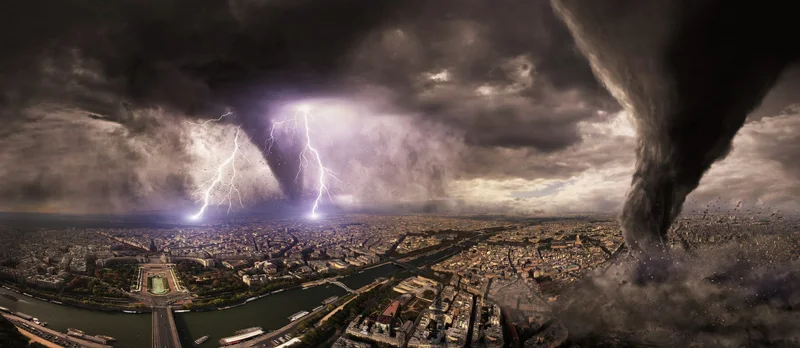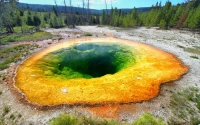The headlines paint a grim picture: a mining disaster in Brazil, floods in Colorado, disaster response training in Washington state, and a governor's plea for help in New Mexico. Individually, they're stories of tragedy and resilience. But viewed collectively, a pattern emerges—a patchwork quilt of inconsistencies in how we define, respond to, and ultimately, value disaster relief.
BHP's Liability: A Drop in the Bucket?
Let's start with the BHP case. A UK court found the mining giant liable for the 2015 dam collapse in Brazil, a disaster that killed 19 and devastated entire communities. The lawsuit was valued at a staggering £36 billion (that's around $48 billion USD). But here's the rub: BHP is appealing, claiming many claimants have already been compensated in Brazil. Their President of Minerals Americas, Brandon Craig, even stated that 240,000 claimants in the London lawsuit "have already been paid compensation in Brazil" and believes this will "significantly reduce the size and value of claims in the UK group action."
Now, I'm no lawyer, but that sounds like a classic delay tactic. And even if BHP has paid out some compensation, is it truly adequate? Pogust Goodhead, the firm representing the claimants, alleges that BHP pressured people to "settle their claims at far below their true value." They're even seeking £1.3 billion in unpaid fees they lost as a result.
The numbers are murky, but the implication is clear: BHP is fighting tooth and nail to minimize its financial fallout, even if it means lowballing victims. What's the real cost of a human life and a destroyed ecosystem? How do you even begin to calculate that? And if a company is found liable, should there be caps on compensation, especially when they have the resources to fight it in court for years?
Colorado's Flood: A $13 Million Wake-Up Call
Then there's Colorado. Governor Jared Polis is requesting a major disaster declaration from FEMA after October floods caused over $13 million in damage to public infrastructure. Colorado Gov. Jared Polis asks President Trump to issue major disaster declaration for October floods $13 million... that's a fraction of what's at stake in the BHP case. Is one disaster inherently "worse" than another? Is it about body count, economic impact, or sheer scale of destruction?
FEMA's assessment puts the damage at $13,820,036—to be more exact. Over 60 miles of road were destroyed, and the sewer system in Pagosa Springs failed. The long-term risks to residents near Vallecito Creek, the Piedra River, and the San Juan River Basin are significant. But will the federal government step up? And if they do, will the aid be enough to truly address the long-term needs of the affected communities?

I've looked at hundreds of these requests for federal aid, and the recurring theme is always the same: a plea for resources that are often insufficient to fully restore what was lost. It makes you wonder, are we simply patching things up, waiting for the next inevitable disaster to strike?
Training in Washington: Preparedness vs. Reality
Finally, we have the story of the Washington National Guard hosting Malaysia's Special Malaysia Disaster Assistance and Rescue Team for domestic response training. It's heartening to see international cooperation in disaster preparedness. The workshop, held in Spokane in late September 2025, focused on civilian search and rescue operations, including swiftwater rescue techniques.
But here's the methodological critique: How effective is this training really? Do these workshops translate into tangible improvements in disaster response? And how do you measure the ROI on preparedness exercises?
The article quotes U.S. Air Force Master Sgt. Dereck Reese, who emphasizes the importance of building relationships and sharing knowledge. "That's a huge deal," he says. But relationships and knowledge only go so far when faced with the raw power of a natural disaster or the calculated indifference of a corporation trying to protect its bottom line. Are we truly preparing for the increasing frequency and intensity of these events, or are we just going through the motions?
The Governor of New Mexico, Michelle Lujan Grisham, said "We've had a tough few years with natural disasters in our state, and we appreciate the great work that our DHSEM team is doing on behalf of New Mexicans in need." But is "great work" enough when the disasters keep coming?
The Relief Doesn't Match The Rhetoric
The disconnect between the scale of these disasters and the resources allocated to address them is glaring. We celebrate international partnerships and express gratitude for the "great work" of disaster relief teams, but the underlying issues—corporate accountability, infrastructure resilience, and equitable compensation for victims—remain largely unaddressed. The numbers tell a story of good intentions, but the reality is a patchwork quilt of inconsistencies that leaves too many people vulnerable.










